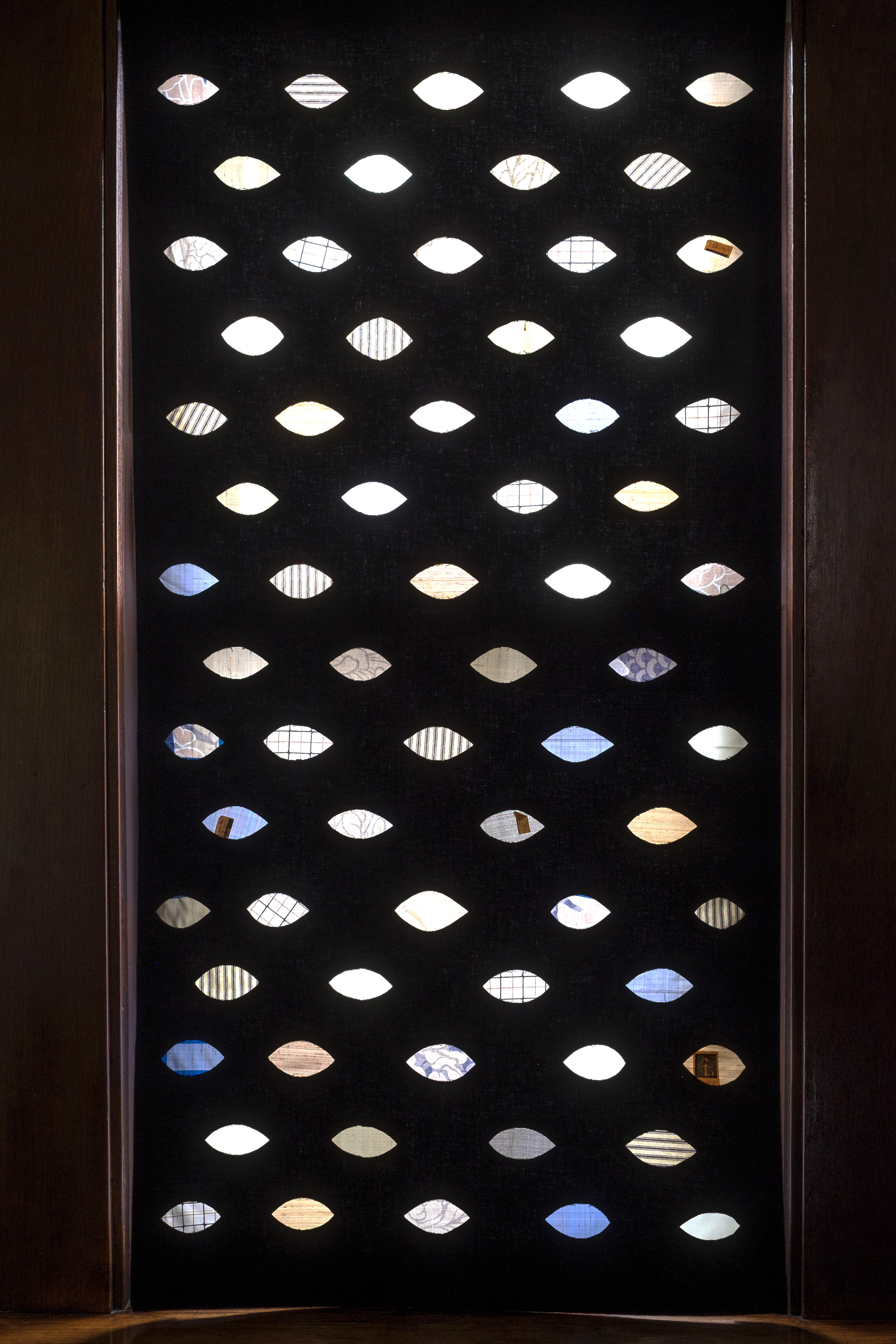FILM RESEARCH ONGOING

Carmen Amengual, A Non-coincidental Mirror. 2024. Still from film. 16 mm to digital.
A Non-Coincidental Mirror is a film-research project that fabricates a memory of a forgotten event: the Third World Filmmakers Meetings. Held in Algiers in 1973 and later in Buenos Aires in 1974, the gatherings brought together filmmakers from Africa, Latin America, and the Arab world to discuss the role of cinema in anti-colonial struggles, to support one another’s work, and to strategize how to make films under conditions of censorship, exile, and scarcity. Out of these meetings emerged the plan to produce an educational documentary about African liberation movements, intended for a Latin American audience. That film was never realized.

Carmen Amengual, A Non-coincidental Mirror, Three-channel video installation. Exhibition view, Smack Mellon, Brooklyn, NY, 2025.
This project imaginatively reconstructs this unrealized venture through experimental storytelling, documentary forms, and installation strategies. Hybridizing the traditions of experimental and political cinema, A Non-Coincidental Mirror recontextualizes the Meetings as a key, though overlooked, episode in the history of Global South solidarities.
The work is grounded in an archive the artist inherited from her mother, who collaborated with the organizers of the Meetings on the unfinished documentary project. From this micro-historical perspective, the research opens onto a larger story: one of solidarity networks, cultural ambition, and the historical forces that determined what could and could not be made.
![]()
Carmen Amengual, A Non-coincidental Mirror, Three-channel video installation. Exhibition view, Smack Mellon, Brooklyn, NY, 2025. Photo by Etienne Frossard
By weaving together archival research, oral histories, and a critical reading of Third Cinema films and manifestos, the project reconstructs not only events but also the dreams and contradictions that animated them.
This project imaginatively reconstructs this unrealized venture through experimental storytelling, documentary forms, and installation strategies. Hybridizing the traditions of experimental and political cinema, A Non-Coincidental Mirror recontextualizes the Meetings as a key, though overlooked, episode in the history of Global South solidarities.
The work is grounded in an archive the artist inherited from her mother, who collaborated with the organizers of the Meetings on the unfinished documentary project. From this micro-historical perspective, the research opens onto a larger story: one of solidarity networks, cultural ambition, and the historical forces that determined what could and could not be made.
![]()
By weaving together archival research, oral histories, and a critical reading of Third Cinema films and manifestos, the project reconstructs not only events but also the dreams and contradictions that animated them.
The work is grounded in an archive the artist inherited from her mother, who collaborated with the organizers of the Meetings on the unfinished documentary project. From this micro-historical perspective, the research opens onto a larger story: one of solidarity networks, cultural ambition, and the historical forces that determined what could and could not be made.
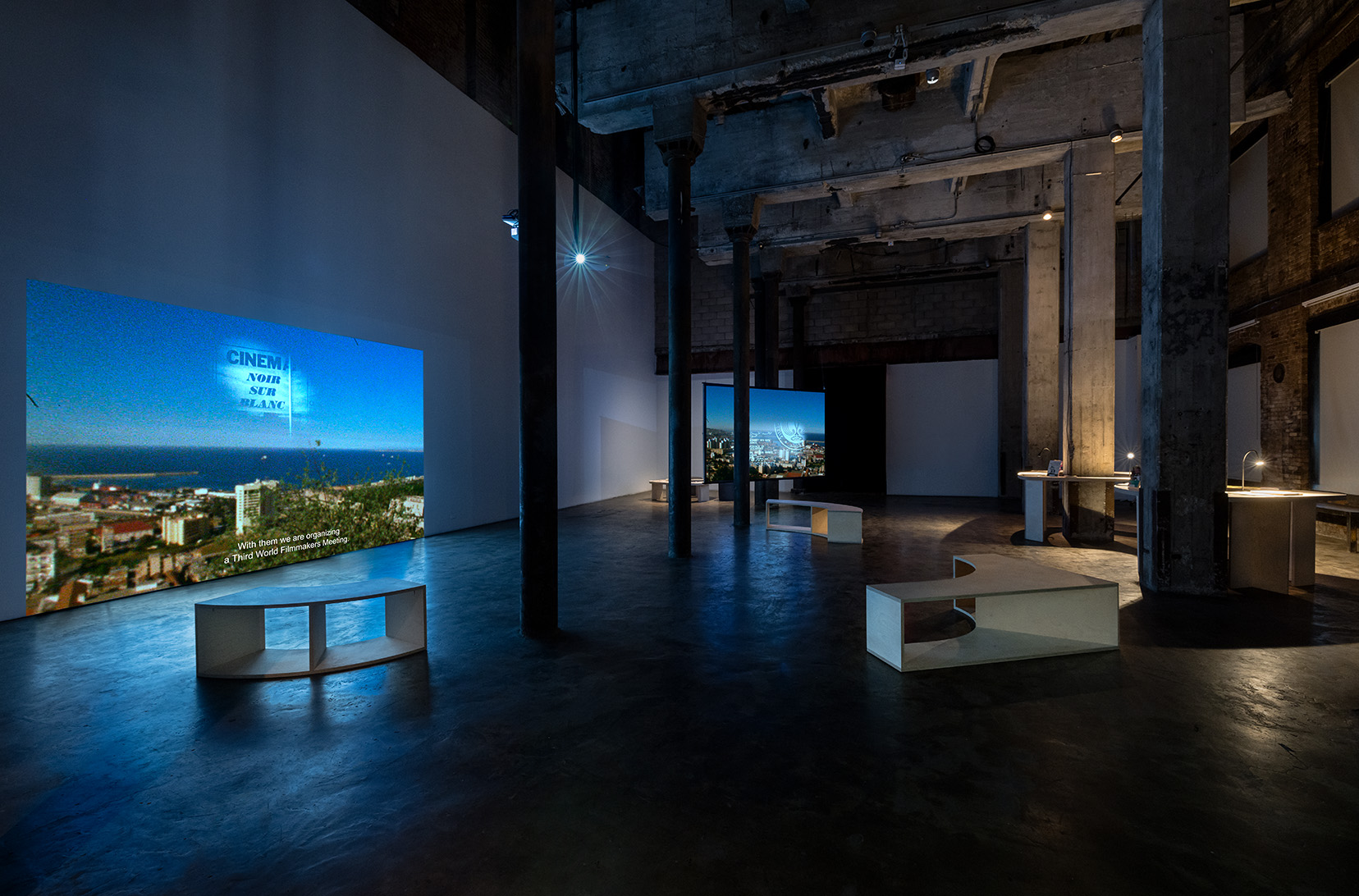
Carmen Amengual, A Non-coincidental Mirror, Three-channel video installation. Exhibition view, Smack Mellon, Brooklyn, NY, 2025. Photo by Etienne Frossard
By weaving together archival research, oral histories, and a critical reading of Third Cinema films and manifestos, the project reconstructs not only events but also the dreams and contradictions that animated them.
Anchored in the ethos of radical filmmaking, the project is experimental in form and method, probing the ghostly presences of the past and reactivating their emancipatory potential for present and future generations.
At the core of Third World internationalism was a fragile but powerful optimism: the hope of finding a mirror in the emancipatory struggles of others. This project traces both its reach and its limits, offering a lived history of ideas that reverberates into present debates on culture and politics. It reflects on the revolutionary force of friendship and on the delicate networks these cultural agents sought to weave—rooted in the belief that cinema could enable oppressed peoples not only to recognize one another, but also to imagine and work together toward emancipation.
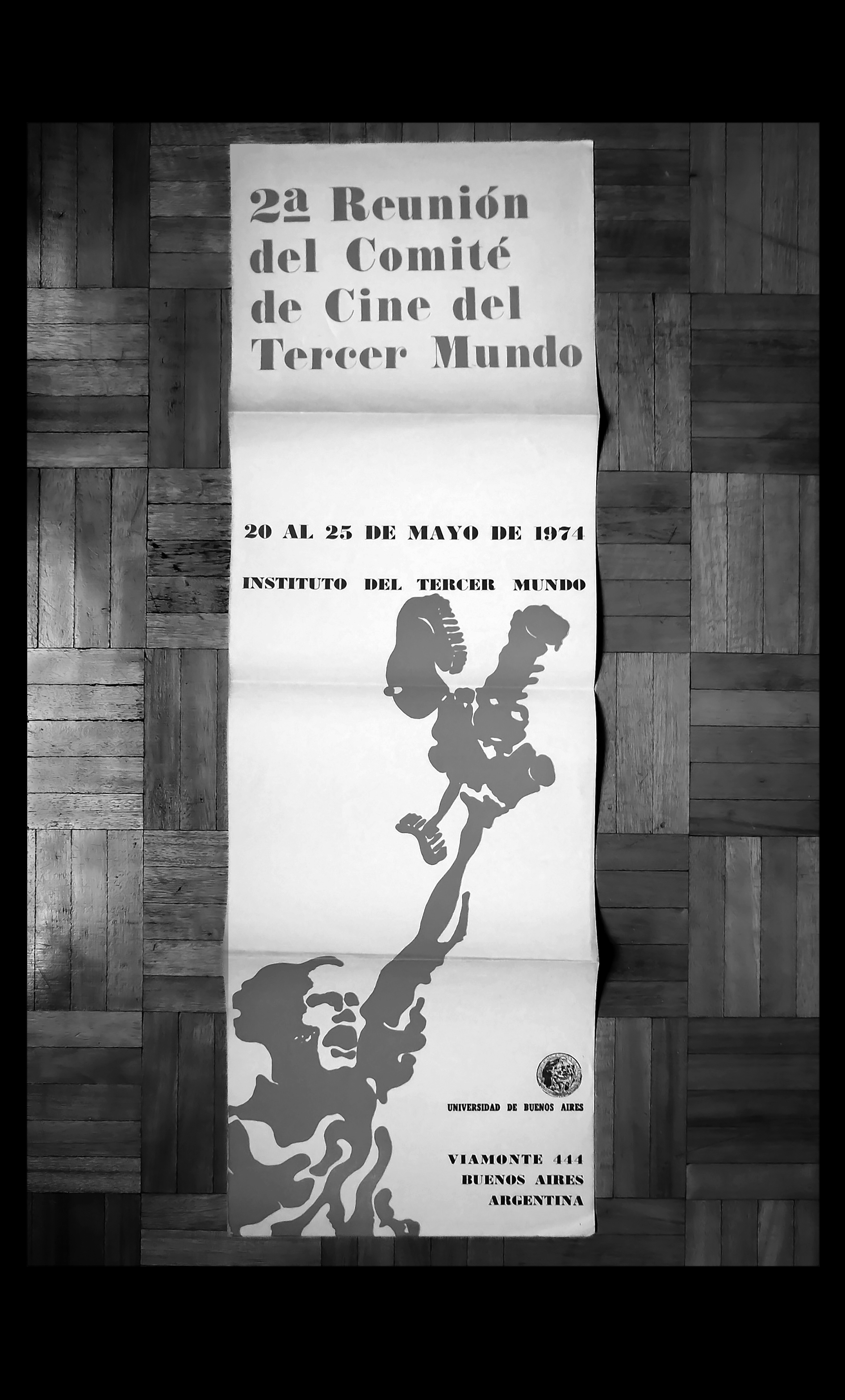

Carmen Amengual, A Non-coincidental Mirror, Three-channel video installation. Exhibition view, Smack Mellon, Brooklyn, NY, 2025. Photo by Etienne Frossard
Carmen Amengual, A Non-coincidental Mirror, Three-channel video installation. Exhibition view, Smack Mellon, Brooklyn, NY, 2025. Photo by Etienne Frossard

Carmen Amengual, A Non-coincidental Mirror, Three-channel video installation. Exhibition view, Smack Mellon, Brooklyn, NY, 2025. Photo by Etienne Frossard
Carmen Amengual, A Non-coincidental Mirror, Three-channel video installation. Exhibition view, Smack Mellon, Brooklyn, NY, 2025. Photo by Etienne Frossard
JUNE 9 -JULY 16
NYSS DUMBO GALLERY 20 JAY STREET # 307 BROOKLYN, NY 11201
CARMEN AMENGUAL, ọMọLOLÚ REFILWE BABÁTÚNDÉ, LIA KUCERA MERCEDES MATTER, DANA NGUY.N, FERNANDO MANUEL OLIVIA MCKAYLA ROSS, SAKI SATO.
CO-CURATED BY ALISON CAUSER & DARLA MIGAN @VARIABLETERMS
What does it mean to be reared in a world that demands we violently tear ourselves into bits and bytes, shattering the embodied psyche’s longing for memory and rest? How can we endure the ceaseless cutting up of self/soul delineated by categories intended to kill off our capacity for unalienated pleasure and political action?
The eight artists in KINETIC LULLABY work in the mediums of sound, printed word, painting, sculpture, and lens-based practices to dare to remember and dream, to code mytho-logical powers, to acknowledge tortuous labors as well as spiritual holism. Briefly this summer, we are holding our fragments together.
In the midst of our ongoing global pandemic we remain captive to genocidal logics evidenced by vaccine apartheid, new wars, and the assault on womxn’s reproductive rights. There has also been a noticeable rise in rates of premature death correlated with increased isolation, general anxiety about the future, and the growing awareness of environmental precarity demanding our attention. Vehicular accidents are killing an overwhelming number of Black pedestrians in the U.S.; just as rural farmers worldwide succumb to hopelessness due to economic inflation; and unprecedented rates of suicide (among children ages ten to fourteen) shock the mental health industry.
The queer Black Carribean analysis of artist and cyberdoula Olivia McKayla Ross searches for a way to make it make sense. Through pop choreographies her desire takes on mythological power inspired by the relationship between electronic video, sanity, and vanity. Deep fantasy means instagram filters, glamour magic, and mirrors, but also anxieties of video transmission: immersion, absorption, surveillance, and control. The poet-programmer’s sense-making moves from the underwater/under-seen archipelago, her own marronage from the algorithm’s caged reduction.
Fernando Manuel’s Recordando el Alma allegorically embodies the trace of a spiritual practice by documenting childhood memories that would otherwise be irretrievable without the use of their camera. By unifying the whispering past with bodily abstraction, the artist invokes forms emerging between spiritual ecstasies and a mostly forgotten suburban plaza in Hialeah.
My studio visit in upstate New York with artist Saki Sato overwhelmed me with feelings that surfaced as I gently held the artist’s small sculptures. Recalling a certain animated character buried deep in my own subconscious made me feel exposed yet safe. I was transported back to memories of being a latchkey kid at age ten or eleven–still young enough to watch PBS cartoons, but also old enough to look forward to afternoon talk shows like Oprah and Ricki Lake. Sato’s sculptures embrace the spirit of a time just before racing to the dial-up modem became our only after-school activity.
The surround of the ongoing emergency only heightened by the global pandemic is part of the long durée of what Hortense Spillers calls the “steady state” of crisis as opposed to thinking crisis as a state of exception.1 This means that regimes of (neo)colonialism and (neo)liberalism sliding into new fascisms, have only benefited from pandemic conditions. In 1963 the abstract expressionist painter and New York Studio School founder Mercedes Matter wrote: “Today, it is possible for a student to go through art school and gain an acute perception of “what is going on,” a fairly intelligent grasp of the situation, and yet never have departed a single step from his original naïveté of vision…[B]ut ironically, while handing him the gift of freedom with one hand, the modern school snatches away from him with the other the circumstances in which this exacting labor of self-confronting can take place: the time to work.”2 By time to work, I hear Matter (still) calling our attention to practice– specifically, the time needed to develop the skills and patience necessary to discover what is most important about and indistinguishable between art and life.
In Fingerprint of the Universe, conceptual artist Dana Nguy.n carves frames from the wood of a tree called by two names on either side an ocean important to her life story. To hold and honor her separated family as a first–gen kid, a ritual encircling of imperial and personal histories occurs-– connecting hands and fingers to tree rings and galaxies. Fire has also been an important source of inspiration for the artist. Witnessing life turning to stardust, Nguy.n creates an altar-like situation with a rare black beach sand of Norcal freeing themselves to love on their own terms.
Lia Kucera’s mixed media exploration of matrilineal inheritances meditates on one of the most intimate relationships: the formation of her attitude towards her own body. In the artist’s recent practice, inspired by Latoya Ruby Fraizer’s The Notion of Family series (2001-14), Kucera went back to her own family home to physically build a symbolic gift of bodily agency. The artist's former high school campus sets the stage of public address and for recalibrating mother daughter bonds.
Carmen Amengual’s mobile sculpture considers how extractive labor and attention economies exhaust the political capacities of the body and transform it into a subject and object of consumption. The piece is a meditation on the longing for a political capacity for action that would allow the body to recover from exhaustion. Through its textual component “Una fuerza que venga y me una, una voz que articule mis demandas,'' the piece invites the viewer to consider what forces must be conjured to transform this passive position of consumption to one of action and intervention.
The artist ọmọlolú refilwe babátúndé’s for d.love arranges song, spoken word, and collaged moving image. Unfolding like a dreamy ode to resting in nature, we witness the tops of tall trees superimposed with streams of flowing river water. Foamy ocean shorelines swirl or are seen running vertically, then horizontally on screen. Paired sunsets appear at different moments and angles, perhaps from different evenings and in multiple locations as the artist embraces the whole sky’s fiery orange and indigos. How often we forget the brilliance of foliage, moon, and water or that there are countless ways to love. A prayerful poem rises from the language of a saved voicemail of a friend, sliding bass strums and the singer’s voice, the most ancient instrument, opens dimensions to let in grace. Across multiple sense registers, babátúndé's video practice sounds out an attunement for grounding ourselves right here, right now.
1 Hortense Spillers, “Time and Crisis: Questions for Psychoanalysis and Race,” Journal of French and Francophone Philosophy Vol. XXVI, No 2 (2018), 25-31.
2 Mercedes Matter, “What’s Wrong with the U.S. Art Schools, ARTNEWS, 1963.
CONTACT: DARLA@VARIABLETERMS.COM
Before my, your, her, his, our, your, their faces
Delante de mis, tus, sus, nuestros, vuestros, sus rostros
2022
As with many countries in what is currently known as the Global South, 1973 was a pivotal year in Argentina. The return of General Perón, after 17 years in exile and the prohibition of his party, generated big hopes among a very active and highly organized leftist movement. The hopes were short-lived. The September 11th coup in Chile, and Perón’s conservative turn quickly proved that Christian conservative alliances, and the definitive U.S. intervention in South America would ensure the prevention of any socialist developments in the region.
Before my, your, her, his, our, your, their faces is a three channel video installation that looks at this period based on a set of letters that the artist’s mother received from friends while she was living in Paris, and later, in Algiers.
The voices in the letters discuss some of these major historical events - alongside personal matters. Their language depicts a complex landscape of affective textures, one that speaks of how subjective positions arose from a collision with historical events, and of how micro-political emancipatory drives intertwined with macro-political and collective movements.
By once again giving texture to these letters’ language -through animation, songs and textual strategies- the piece is a reflection on the historical nature of our present. Through amplifying these voices’ echoes, their hopes and contradictions, it seeks to articulate the historical riddle they were entangled with. Its aftermath is our present. May the crumbles of their dreams give us a sense of orientation.
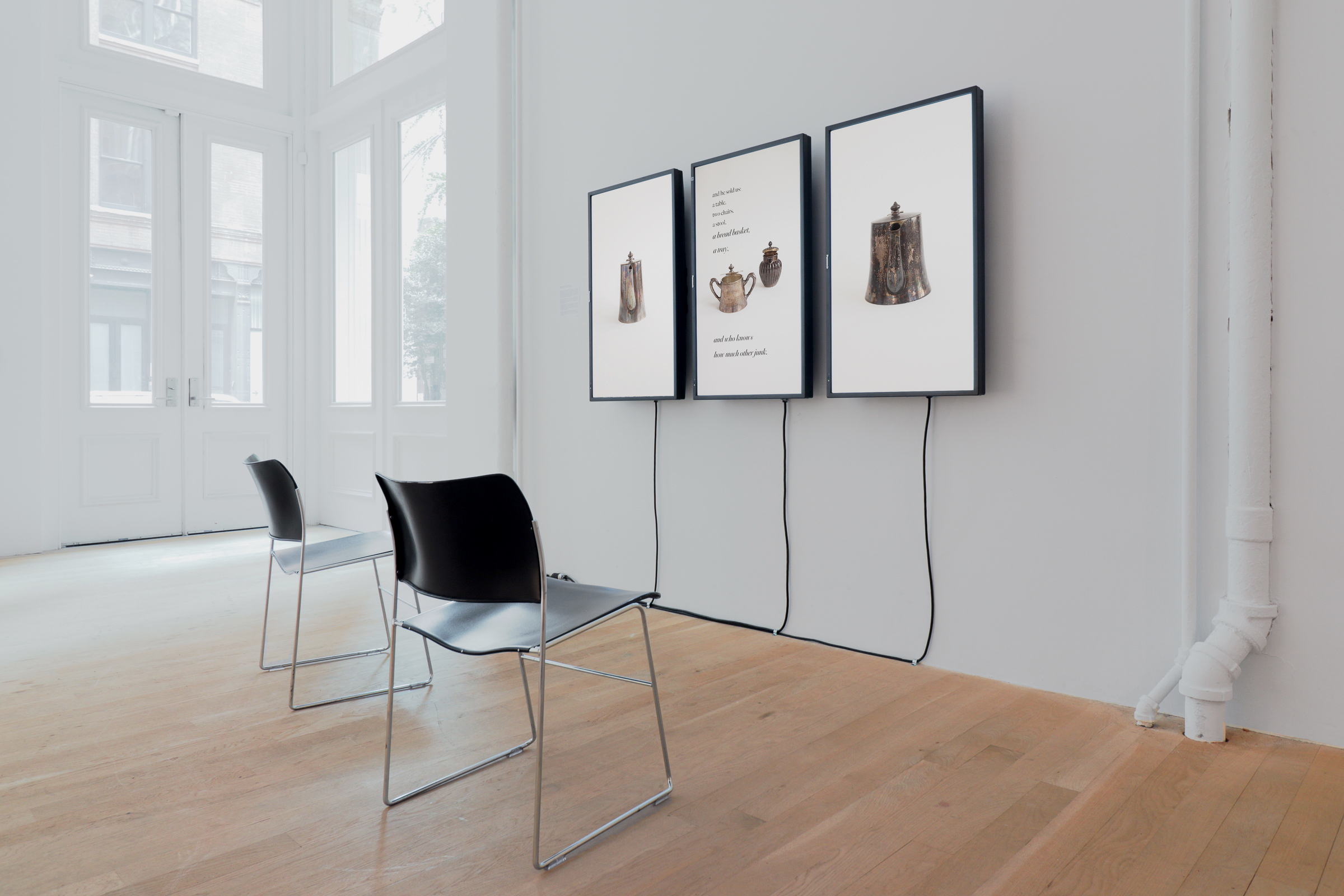
Before my, your, her, his, our, your, their faces, 2022. Installation view.
Everything is Common, Whitney ISP 2021-22 Studio Program Exhibition, Artists Space, New York, 2022.
Image credit: Steven Cottingham

Carmen Amengual, Before my, your, her, his, our, your, their faces, 2022
Stills from video.

Before my, your, her, his, our, your, their faces, 2022. Exhibition brochure.
Una fuerza que venga y me una,
una voz que articule mis demandas
2022
Installation for the group exhibition Kinetic Lullaby, curated by Alison Causer and Darla Migan at NYSS Dumbo Gallery, Brooklyn
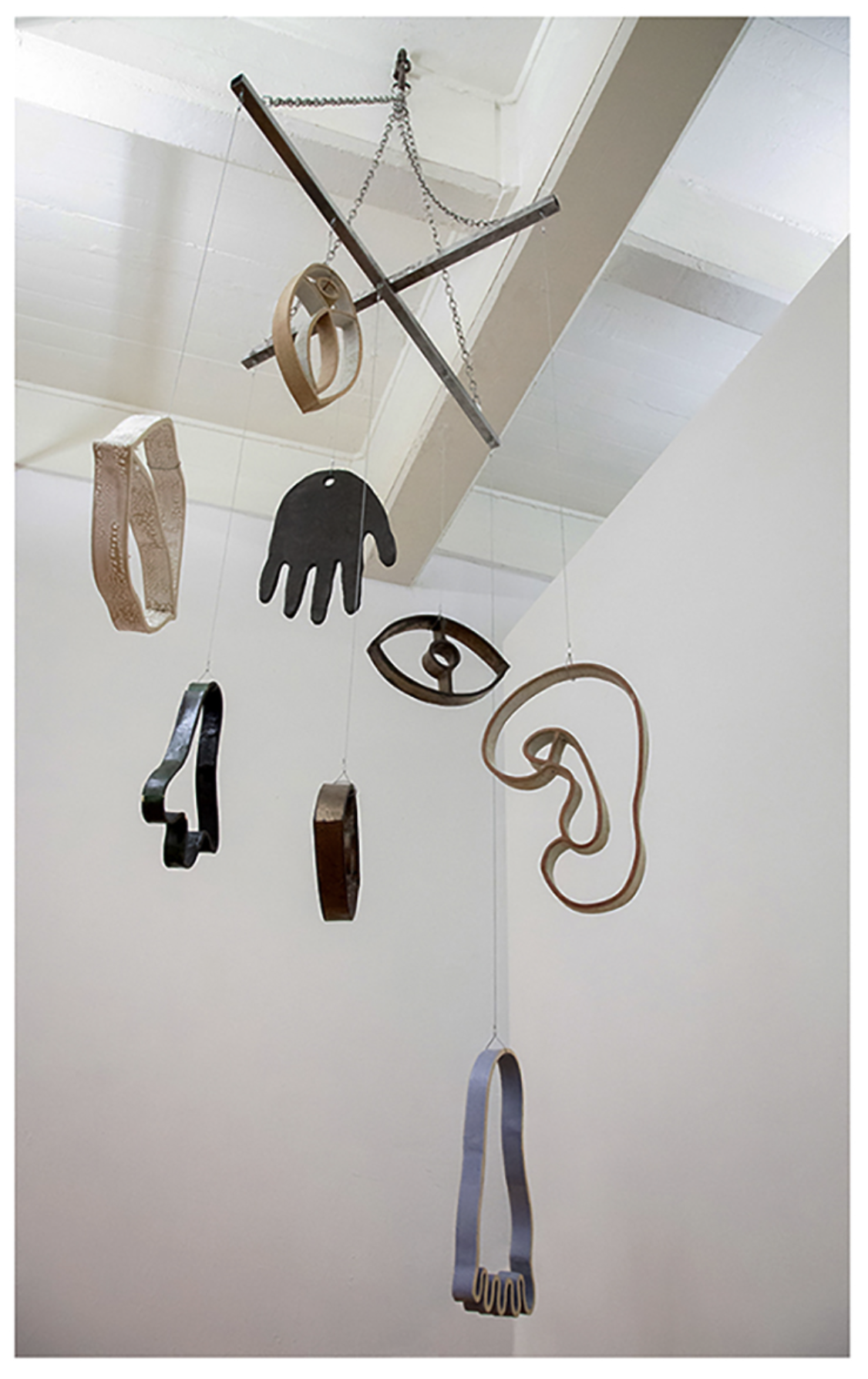
Una fuerza que venga y me una, May a force come and bring me together, 2022, installation view.
Kinetic Lullaby, NYSS Dumbo Gallery, Brooklyn.
Excerpt from curatorial text
[full text here]
What does it mean to be reared in a world that demands we violently tear ourselves into bits and bytes, shattering the embodied psyche’s longing for memory and rest? How can we endure the ceaseless cutting up of self/soul delineated by categories intended to kill off our capacity for unalienated pleasure and political action? The eight artists in KINETIC LULLABY work in the mediums of sound, printed word, painting, sculpture, and lens-based practices to dare to remember and dream, to code mytho-logical powers, to acknowledge tortuous labors as well as spiritual holism. Briefly this summer, we are holding our fragments together. [...]
Carmen Amengual’s mobile sculpture considers how extractive labor and attention economies exhaust the political capacities of the body and transform it into a subject and object of consumption. The piece is a meditation on the longing for a political capacity for action that would allow the body to recover from exhaustion. Through its textual component “Una fuerza que venga y me una, una voz que articule mis demandas,'' the piece invites the viewer to consider what forces must be conjured to transform this passive position of consumption to one of action and intervention.
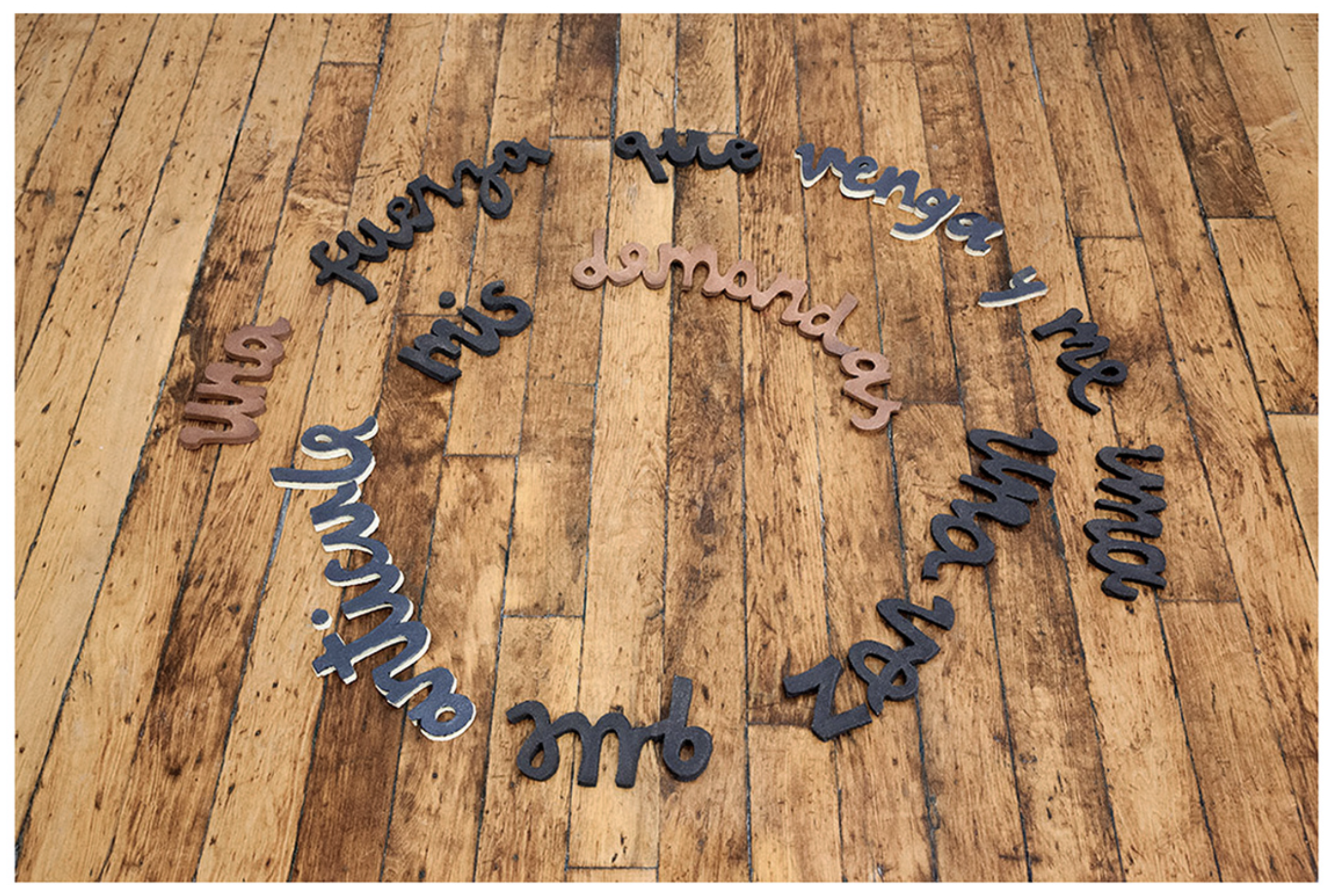
Una fuerza que venga y me una, May a force come and bring me together, 2022, installation view.
Kinetic Lullaby, NYSS Dumbo Gallery, Brooklyn.
WORKS
Fragments from Algiers
2019
![]()
![]()
![]()
Carmen Amengual, Fragments from Algiers, 2019. Super 8 to digital, 4:52 min.
Fragments from Algiers
2019
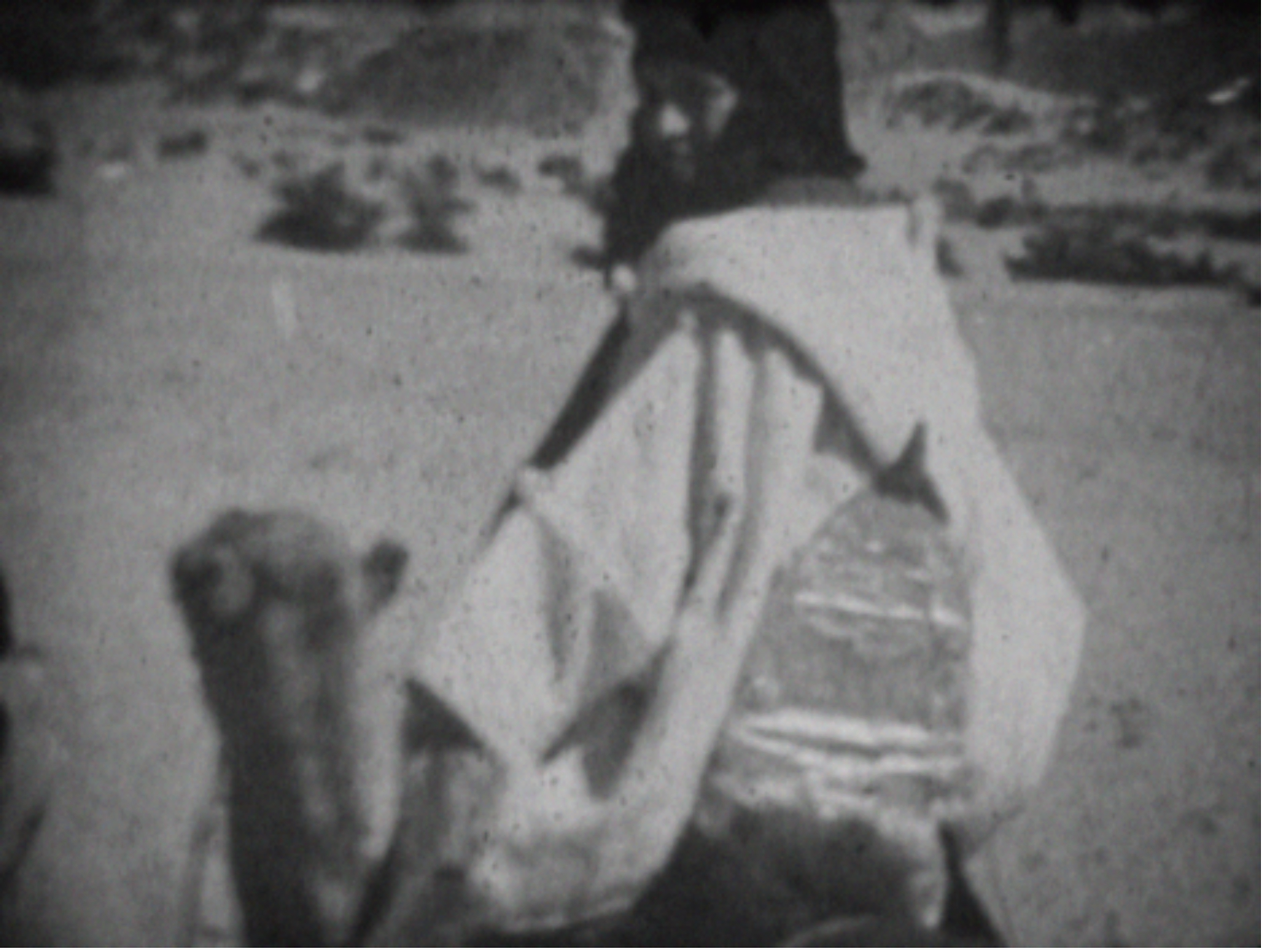
Carmen Amengual, Fragments from Algiers, 2019. Super 8 to digital, 4:52 min.

Carmen Amengual, Fragments from Algiers, 2019. Super 8 to digital, 4:52 min.
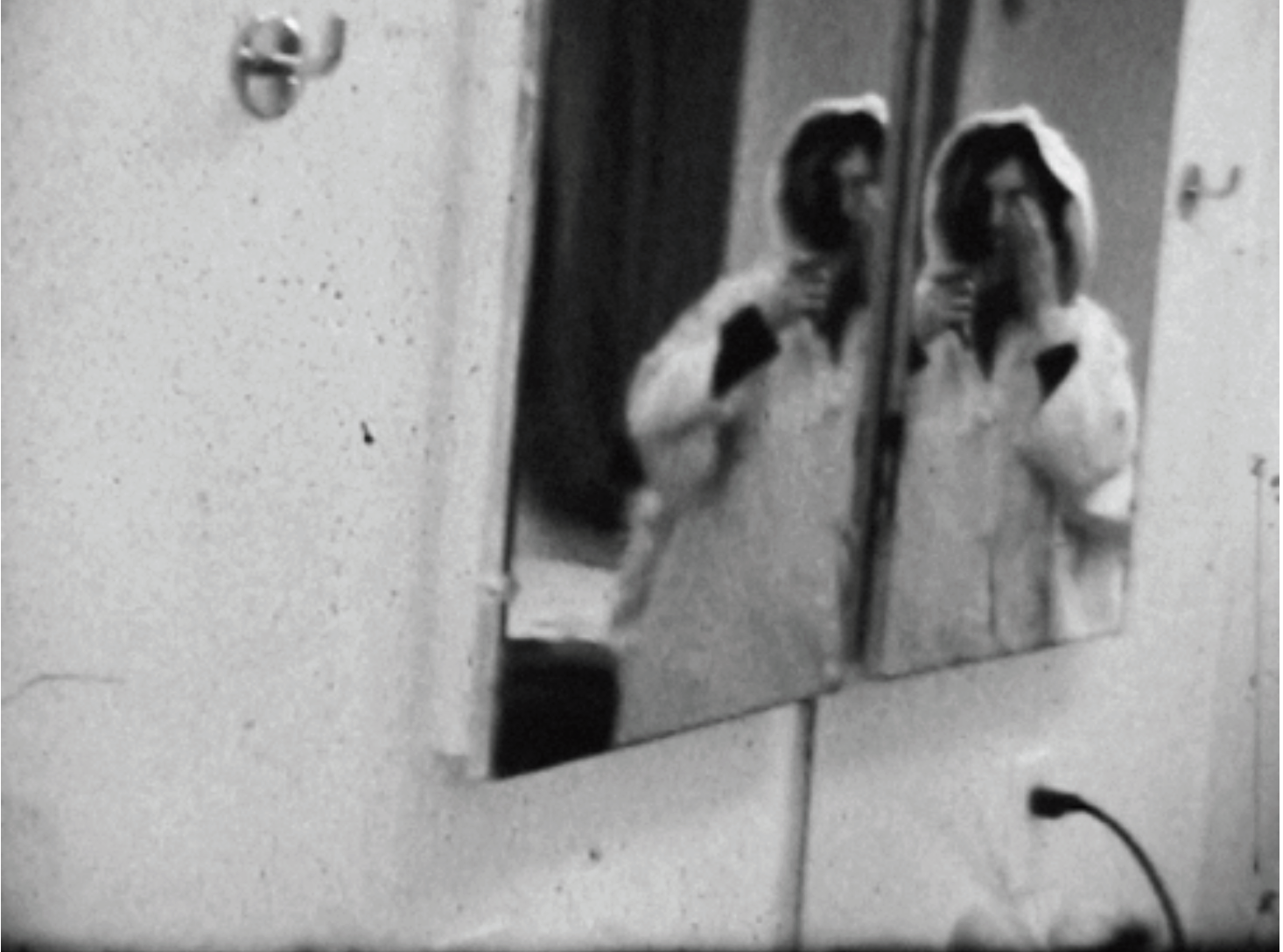
Carmen Amengual, Fragments from Algiers, 2019. Super 8 to digital, 4:52 min.
Fragments from Algiers (2019) is a four-minute Super 8 film that stemmed from an encounter with my mother’s archive from her year in Algeria in the 1970s.
This piece inaugurated my multi-year research-based project about the first Third World Filmmakers Meeting, held in Algiers in 1973.
The work does not attempt to reconstruct history in a linear sense, but to reactivate the textures of what was left behind: folded letters, envelopes, official stamps, credentials, photographs, and clippings.
Filmed in black and white, the camera hovers and moves restlessly across these surfaces, too quickly to permit reading, privileging material presence over informational content.
The archive is treated less as evidence than as a living field of affect and memory. A single letter, subtitled on screen, anchors the work: a note from filmmakers Jorge Giannoni and Susana Sichel in 1974. Writing from Buenos Aires, they describe the challenges of sustaining the momentum of the Third World Filmmakers Meeting held in Algiers the previous year. The correspondence evokes a larger collective project: an unfinished documentary on anti-colonial struggles that my mother was meant to help realize, but which never came to be.
WORKS
Only a Truncated and Imaginary Vision (2019)
![]()
Carmen Amengual, Only a Truncated and Imaginary Vision, Digital projection.
Only a Truncated and Imaginary Vision (2019)
This installation forms part of Fragments from Algiers, a series of works investigating the first Third World Filmmakers Meeting, held in Algiers in 1973. At its center, a still image of the Sahara desert, unearthed in the filmmakers’ archive, is projected through a peephole, forcing the viewer into an intimate yet partial encounter. The image looms within the exhibition space like a fragment of memory, an apparition both concrete and elusive.
Accompanying the projection is a sound composition by the artist that layers and interlaces cicada calls recorded across different continents. The cicada’s voice functions as metaphor: a signal of generational awakening after long periods of dormancy, echoing the spirit of Third World solidarity that animated the 1970s. At the same time, its repetitive cadence recalls the mechanical rhythm of a film projector, collapsing natural and technological sound into one.
Through this interplay, image and sound conjure the fragility and persistence of unfinished histories. The work suggests the sensation of a mirage, half-seen, both real and imagined, while reflecting on the ever-open possibility of unearthing collective dreams and revolutionary projects that remain latent.
Presented in 2019 at Biquini Wax ESP, Mexico City, in an exhibition organized by Kirsten Mairead Gill.

Carmen Amengual, Only a Truncated and Imaginary Vision, Digital projection.
Installation view, Biquini Wax ESP, in Mexico City, 2019
Carmen Amengual, Cicadas # 1: Mirage - Haunting. Sound, 56 min. 2019
(5 min. excerpt)
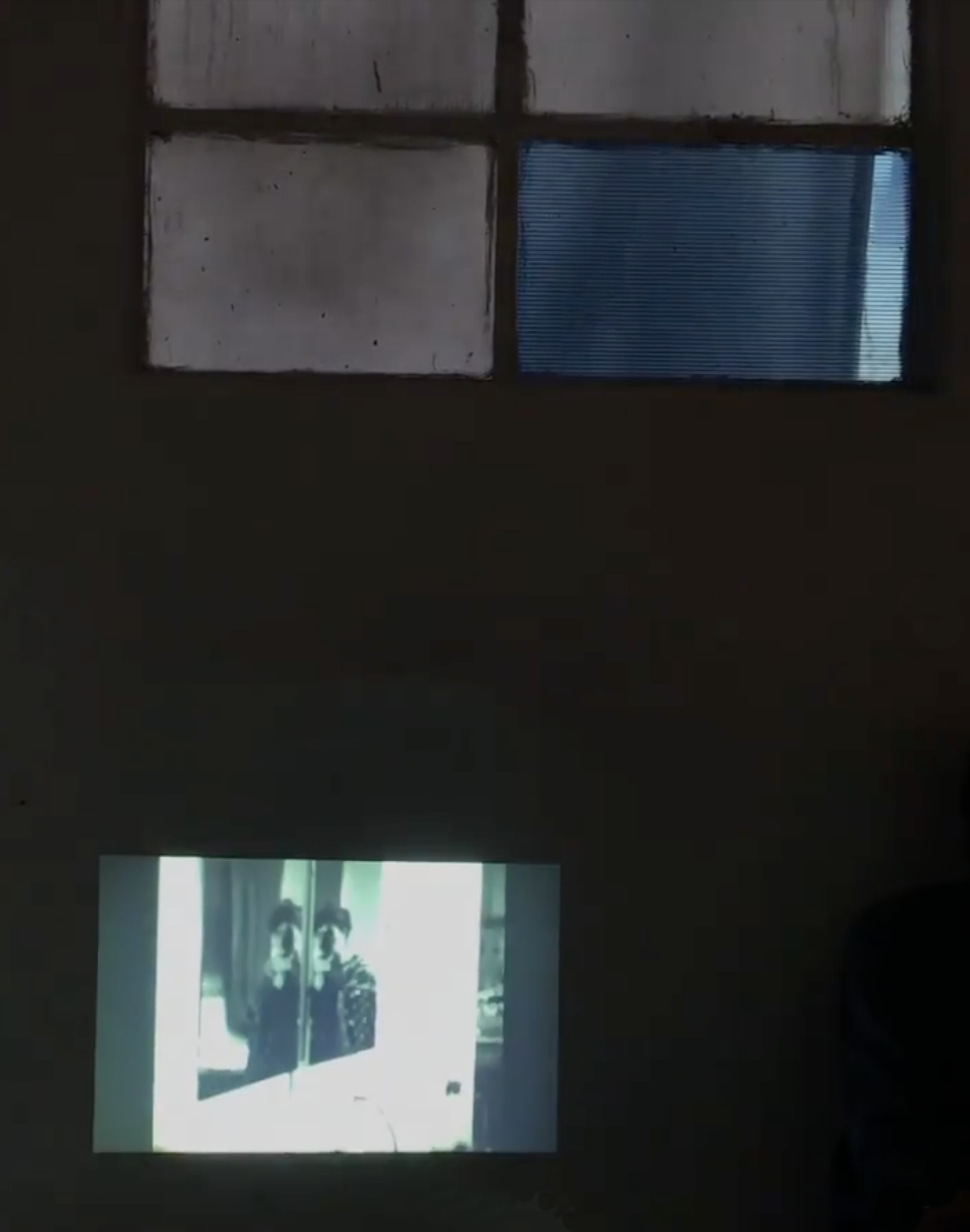
Carmen Amengual, Only a Truncated and Imaginary Vision, Digital projection.
Installation view, Biquini Wax ESP, in Mexico City, 2019

Carmen Amengual, Only a Truncated and Imaginary Vision, Digital projection.
Installation view, Biquini Wax ESP, in Mexico City, 2019
The Tenuous Arithmetics of Kinship
2018
table, Chicago
Photos by Kim Becker
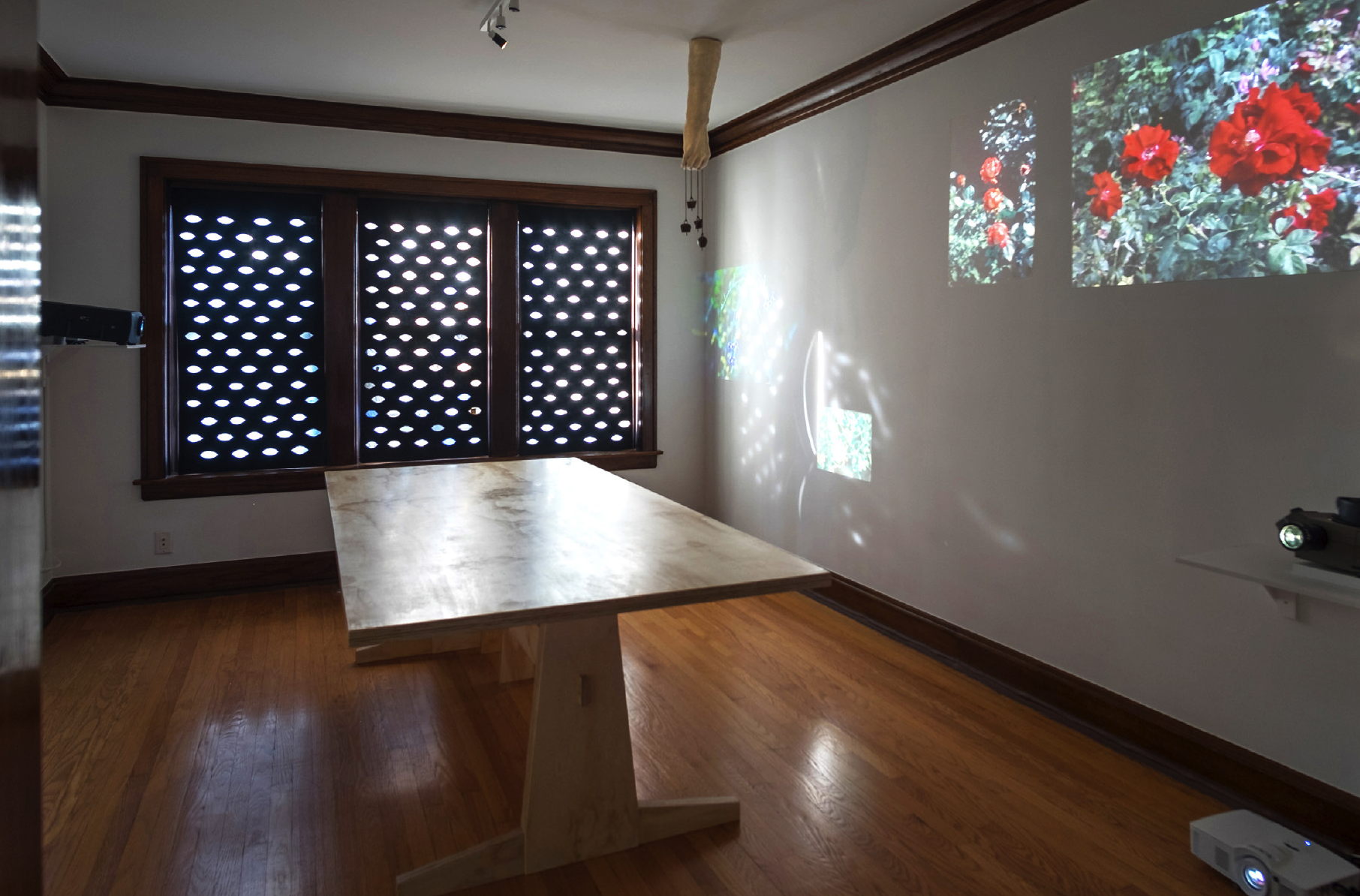
Carmen Amengual, The Tenuous Arithmetics of Kinship, 2018, installation view.

Carmen Amengual, Slight appearance and its antonym, 2018.
![]()
Carmen Amengual, The Tenuous Arithmetics of Kinship, 2018, installation view.
In this exhibition the artist explores ideas of overlapping temporalities, inter-subjectivity, strangeness and mourning. The main installation is composed by hree couplings of slide and video projections that loom in the exhibition room, while shimmers of daylight alter the space, filtering shades through a fabric piece installed in the window. The slides, pictures of flowers shot in a botanical garden in the early 70’s in London by the artist mother, are paired with videos shot by the artist of similar flowers in a botanical garden in Los Angeles. What might seem a futile attempt to re-perform a gaze becomes a ritual of mourning and a meditation on the fragility of the present.
From the ceiling, a ceramic sculpture in the shape of an arm, holds metal cowbells, both a location devise and maker of time passing.
In a small room, behind the kitchen area, a rope piece in the shape of a ladder proposes the possibility of uniting what is physically separated.
This exhibition was installed at table, a temporary artist-run project space organized by Kyle Bellucci Johanson in the Avondale neighborhood of Chicago.
![]()
Carmen Amengual, The Tenuous Arithmetics of Kinship , 2018
(detail),
![]()
Carmen Amengual, The Tenuous Arithmetics of Kinship, 2018.
![]()
Carmen Amengual, The Tenuous Arithmetics of Kinship, 2018
(detail).
![]()
Carmen Amengual, Knot Positioning or How to Trace a Line Behind Doors, 2018.
![]() Carmen Amengual, Hours, 2018.
Carmen Amengual, Hours, 2018.
![]()
Carmen Amengual, Slight appearance and its antonym, 2018, (detail).
On the Trail Rack of Modernity (Leaning my Head)
2018
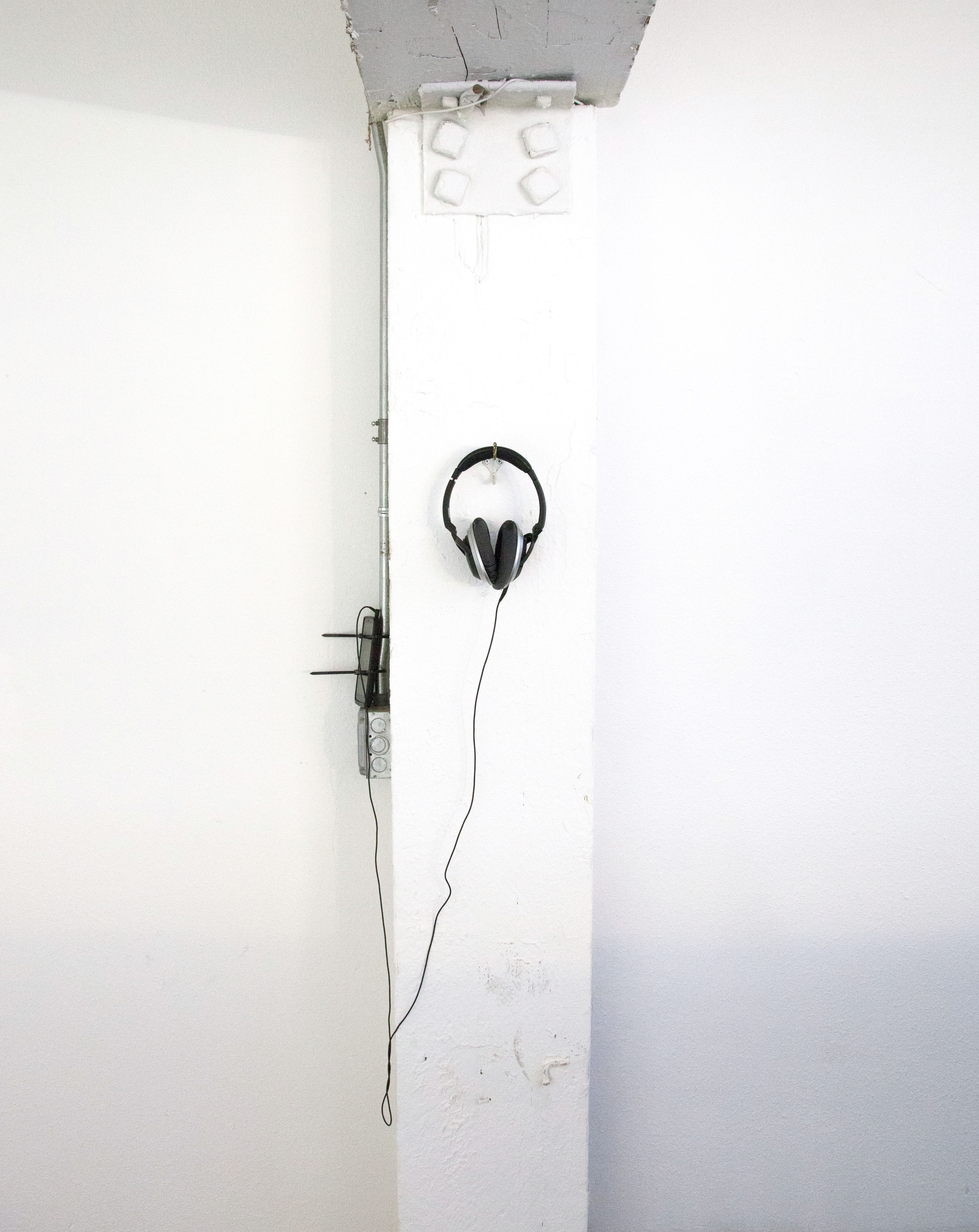
Carmen Amengual, On the Trail Rack of Modernity (Leaning My Head), 2018
On the Trail Rack of Modernity (Leaning My Head) is a two channel sound piece that plays with the litererary trope of the oracular message. The piece was inspired by some gothic moments of Shakespeare’s plays, Richard III’s line “My kingdom for a horse,” and by the poem “Cadáveres” by Argentinian activist and poet Néstor Perlongher.
Horses and corpses are key in the imagery of the Apocaliptic. In historical terms, the weaponization of the horse played a fundamental role in the technology of war that made the colonial project in the Americas possible. Tracing a line from the origins of Modernity (Shakespeare) to the “corpses” of Argentinian dictatorship, the piece articulates distant times and histories of imperial ventures, neoliberal politics, and destruction.
Investigating the aesthetics of oracular language and its interpretative ambiguity, the piece is presented as a riddle in which the meaning of the two words pronounced in simoultaneity is left to be solved by the audience.
This piece was presented in the exhibition The Ages at the artist-run space Dread Lounge, Los Angeles, in 2018.
From Time to Time and Time and Again
2018
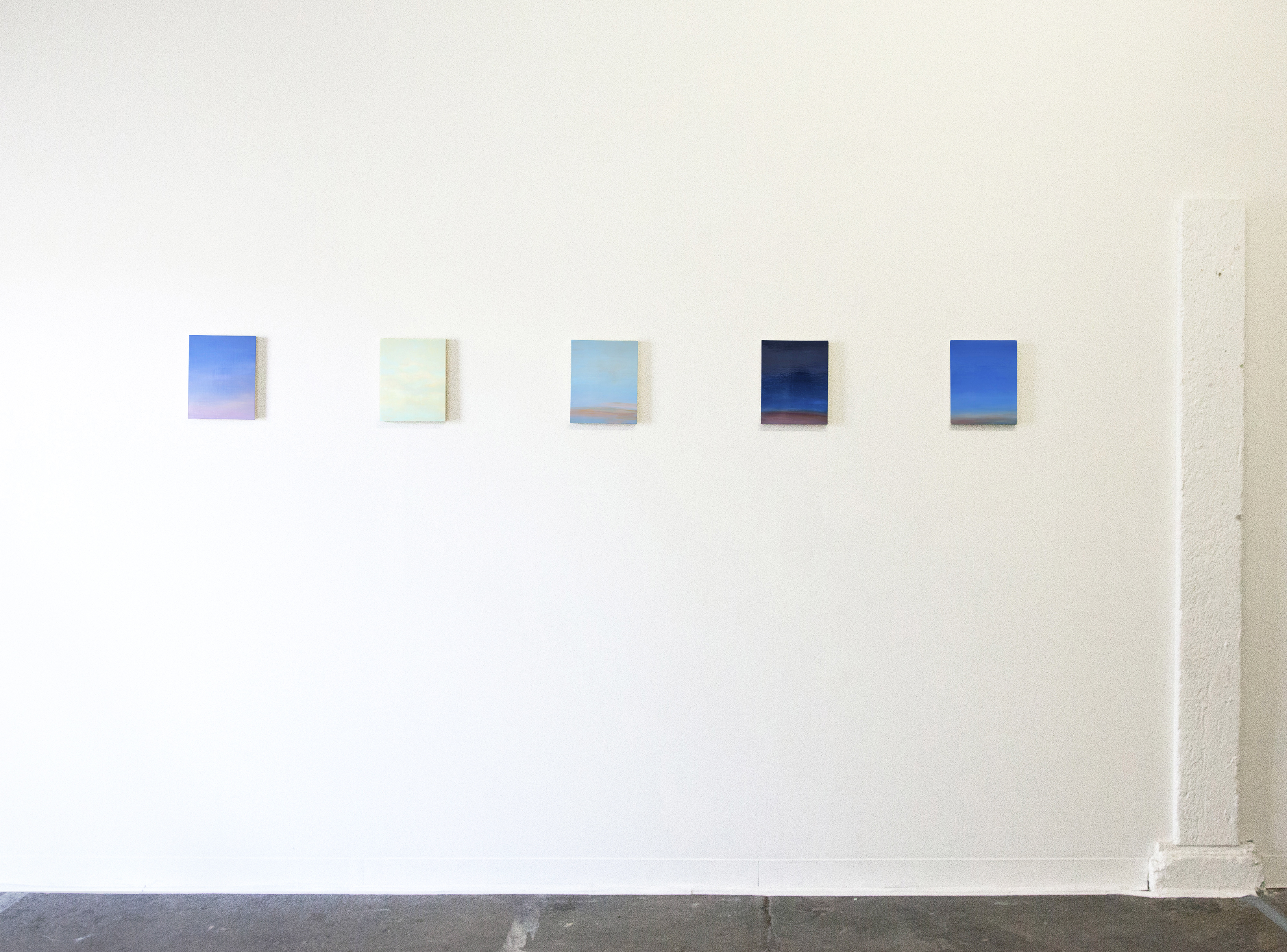
Carmen Amengual, From Time to Time and Time and Again, 2018.
Exhibition view, The Ages, Dread Lounge, Los Angeles.



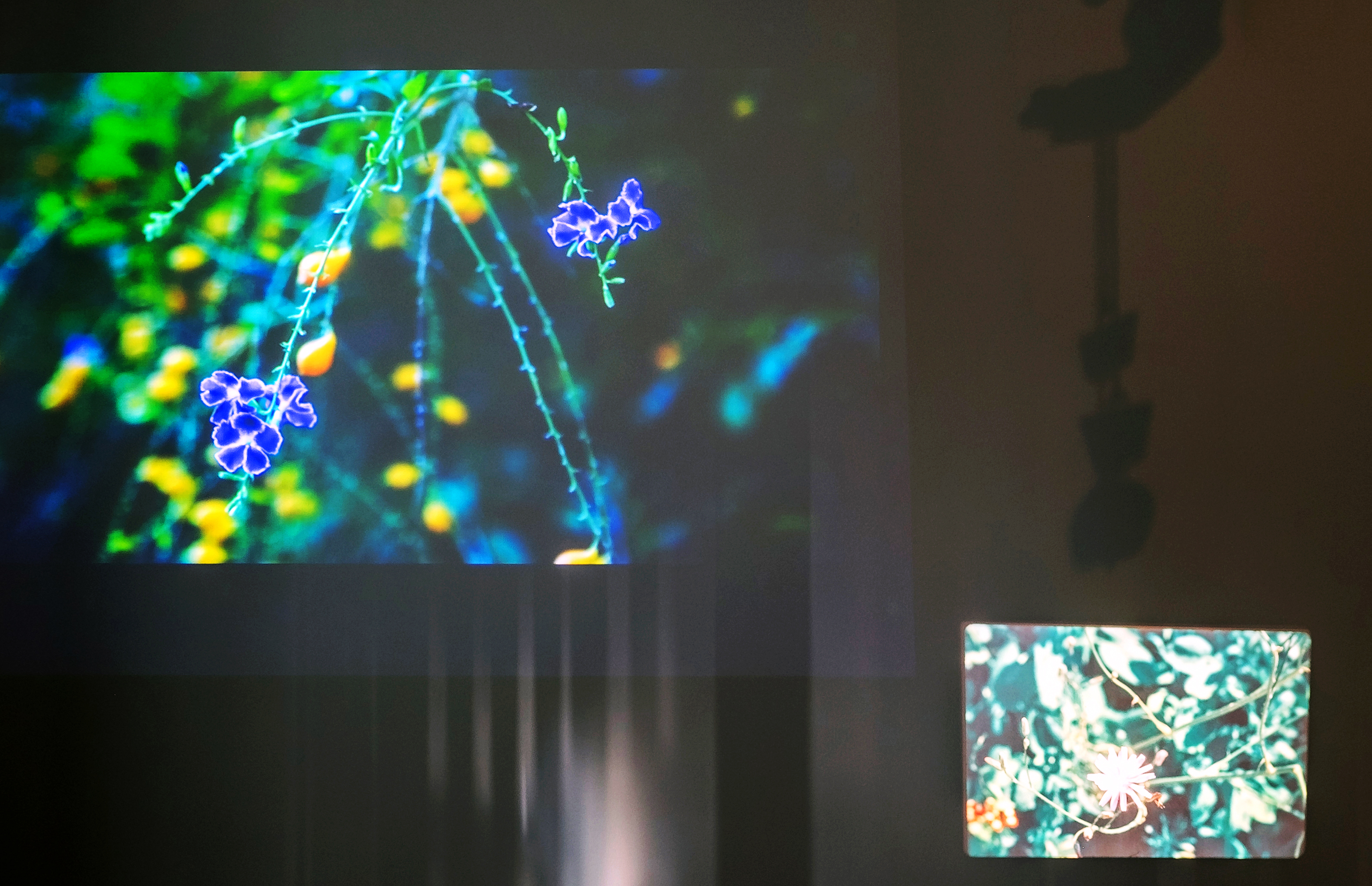

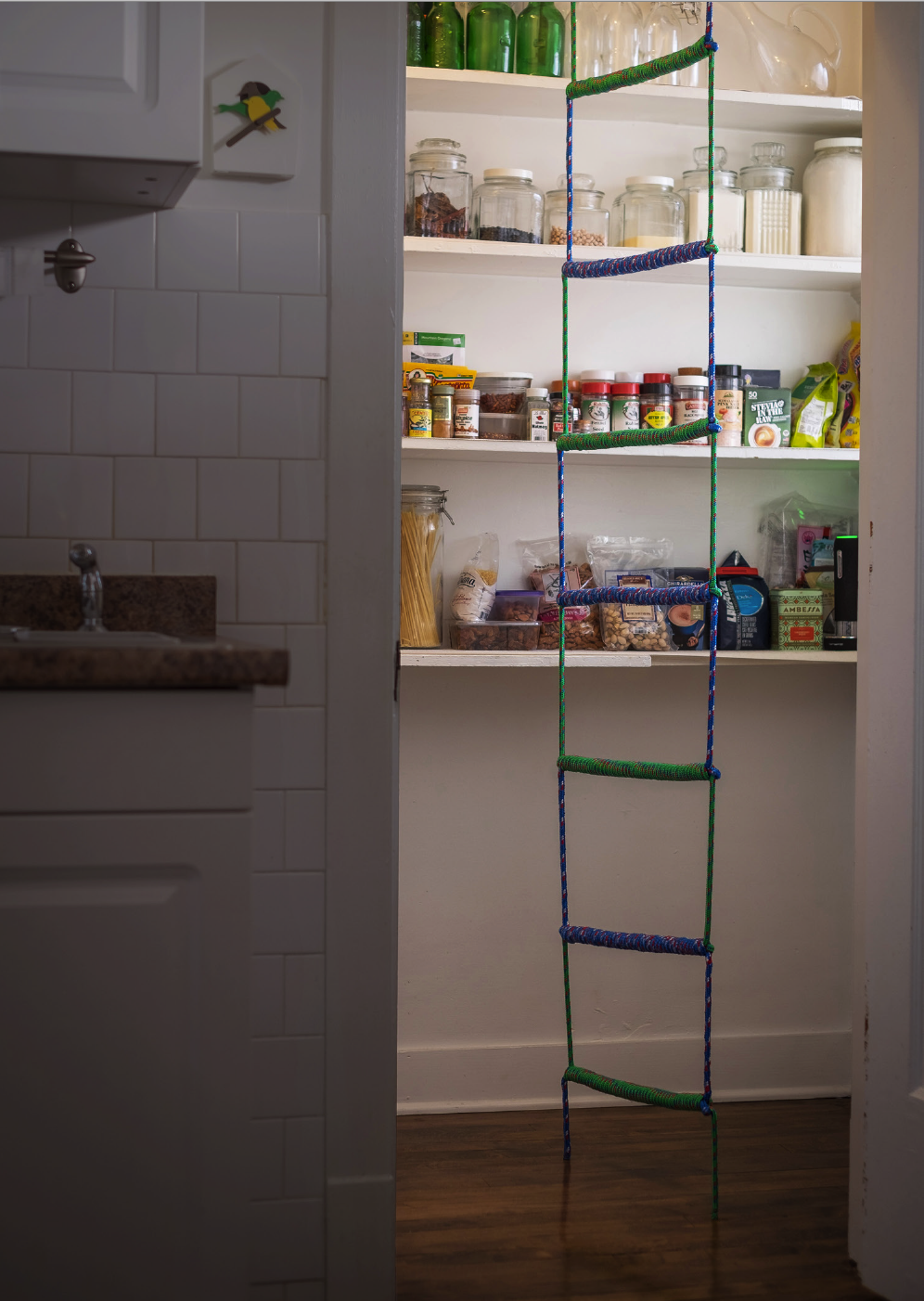
 Carmen Amengual, Hours, 2018.
Carmen Amengual, Hours, 2018.